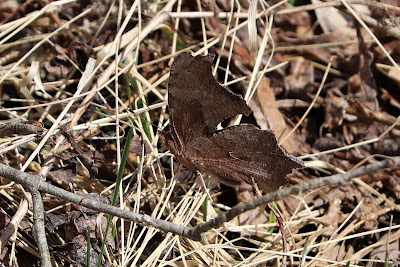More Things With Wings from this week...
While hiking on the deserted trails in North Lambton, I finally got a picture of a Red-breasted Nuthatch.They have been few and far between in Lambton County this year!
Deryl photographed a Golden-crowned Kinglet that landed on the ground in front of him! They move so quickly, it can be difficult to get a crisp image.
We were treated to the bugle call of Sandhill Cranes
again when a pair flew over L-Lake at Port Franks.
The vocalization continued when another pair of cranes who had already
chosen the lake as a nesting site, were alert to intruders in their territory!
Earlier in the week, Deryl visited L-Lake and saw a Kingfisher resting in a tree.
Kingfishers have been calling in Canatara Park but I have not seen one yet this spring.
While walking along the Nature Conservancy of Canada trail beside L-Lake, we found signs of Pileated Woodpecker activity. Unfortunately we did not find the bird. The cartoon character, "Woody The Woodpecker" was designed in the likeness of the Pileated.
Pileated Woodpecker taken in March 2018
Yes, its another Chickadee picture. This one surprisingly landed on very a thorny branch!


















































